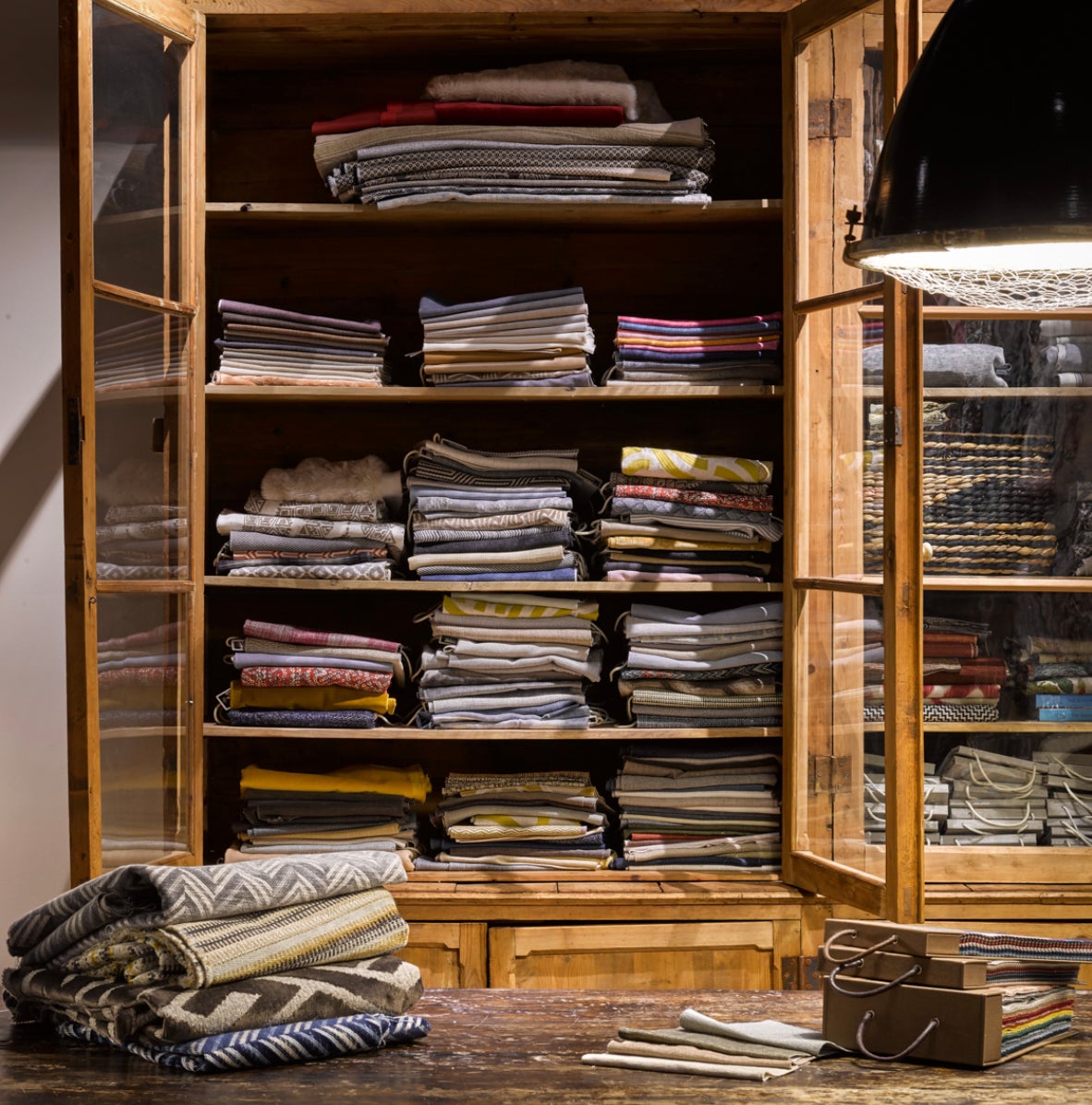For most, the coronavirus pandemic had forced operations to slow to a crawl, if not a standstill, by mid-March. But for two fabric industry visionaries, business pushed forward—now, they share a clear-eyed view of the challenges (and opportunities) that lie ahead. In Business of Home’s latest Community Discussion, editor in chief Kaitlin Petersen spoke with Fabricut vice president David Klaristenfeld and Castel founder and CEO Stephane Silverman. The two fabric industry leaders spoke to BOH about weathering the coronavirus storm, their experiences as trade-only businesses and more.
Watch the recorded conversation here, or read on to find out some of the top takeaways from Klaristenfeld and Silverman—from the digital tools that best serve the fabric industry to what the future might hold for trade-only businesses.

Sample size
Both Klaristenfeld and Silverman count themselves lucky that their sample and order fulfillment was relatively uninterrupted throughout the pandemic. But one immediate impact of the shelter in place orders was a decline in sales as projects were put on hold—and a dramatic increase in the number of memos being ordered. “When a customer can’t come into a showroom, they are ordering more memos to make sure the color and texture is exactly right for the job,” says Klaristenfeld—a significant cost-of-doing-business increase for textiles businesses to shoulder. Silverman, too, spoke of the high costs of sampling; he has been considering a limited release of samples for his latest collections, sending the memos only to his best agent showrooms to cut the cost of nationwide sample distribution. The trade-off, says Klaristenfeld, rivals (and reinforces the value of) the company’s investment in real estate: “It’s worth paying the rent for the showroom—it’s [that] expensive!”

It’s about e-service, not e-commerce
If the COVID-19 shutdowns hammered any lesson home, it was that the tactile experience of specifying fabric can’t be underestimated—or rushed. “I don’t think our industry is well-suited for what we consider e-commerce—those expectations of Amazon, the ‘You click, you order, it ships overnight, you don't like it, you send it back.’ We’re not there and I’m not sure that we ever will get there,” says Silverman. But what he is hopeful to see is a proliferation of what he calls e-service, offering a simpler way to search and source samples online, along with offering the client support every step of the way. The focus on delivering samples and customer service is no accident: Design projects are such long-lead endeavors that same-day sales are few and far between. Instead, a trade brand’s digital initiatives should support the same goals as their showrooms—samples. “If a client comes into a showroom, you want them to take samples,” he says. “There is no selling impulsively right then and there, especially in fabrics.”
Will COVID push trade-only fabric companies to sell retail?
Not quite. “To have our own storefront defies what we’re trying to accomplish as a company,” says Klaristenfeld. “I don’t believe most people can take a yard of fabric and figure out the best way to use it, and I feel like it would defeat the purpose of the whole design trade if we did something like that.” Silverman agrees: “We tend to lump the trade business into one big thing called ‘the trade,’ but we’re all very different. I don’t ever see fabric being retail because you need a maker. You need a specifier to pick the right thing, and then it has to go to an upholsterer or a drapery maker—you need to have some real know-how to make it into that end piece.”
Will the showroom survive?
“I’m a believer in the design center as a place to go and select fabrics,” says Klaristenfeld, explaining that the company’s showrooms in cities that have reopened for business have seen a reassuring influx of designer clients coming in the door. “People want to shop the showroom—it makes it easier for them,” he says. But for another subset of clients, working online is preferable to an in-person visit—and Klaristenfeld and Silverman agree that a successful business must be able to cater to both. “Everyone needs to embrace the omnichannel experience,” says Silverman. “I’ve told a lot of our showroom partners, ‘What you own today, out of everything, is the relationship [with designers]. That is the strongest element you have. You have lots of good elements—beautiful showrooms, a one-stop shopping experience for a variety of product. But they own the relationship. Where I feel that the showrooms have an opportunity is to augment that relationship by building an e-service website.”
____________
Business of Home’s Community Discussion is a weekly series of interactive Q&A events on Zoom for BOH Insiders. Hosted by editor in chief Kaitlin Petersen, the conversations explore how COVID-19 is impacting interior design and the home industry—and how designers and brands should respond.
BOH Insiders can watch the recorded sessions here. (Not a BOH Insider? Learn more about our membership community here.)
Homepage image: Stacks of textiles at the Castel showroom in New York | Courtesy of Castel




























